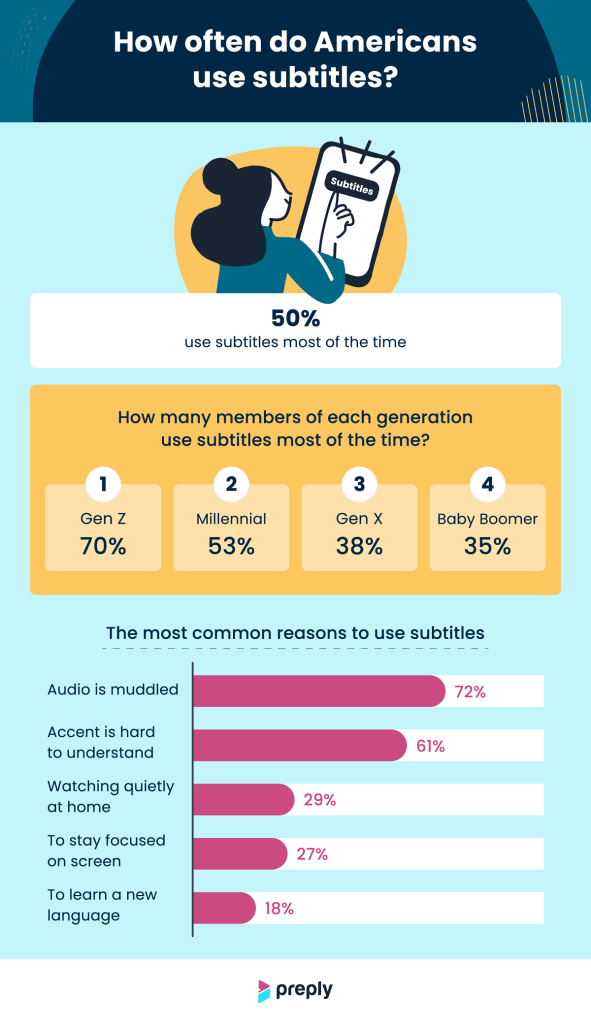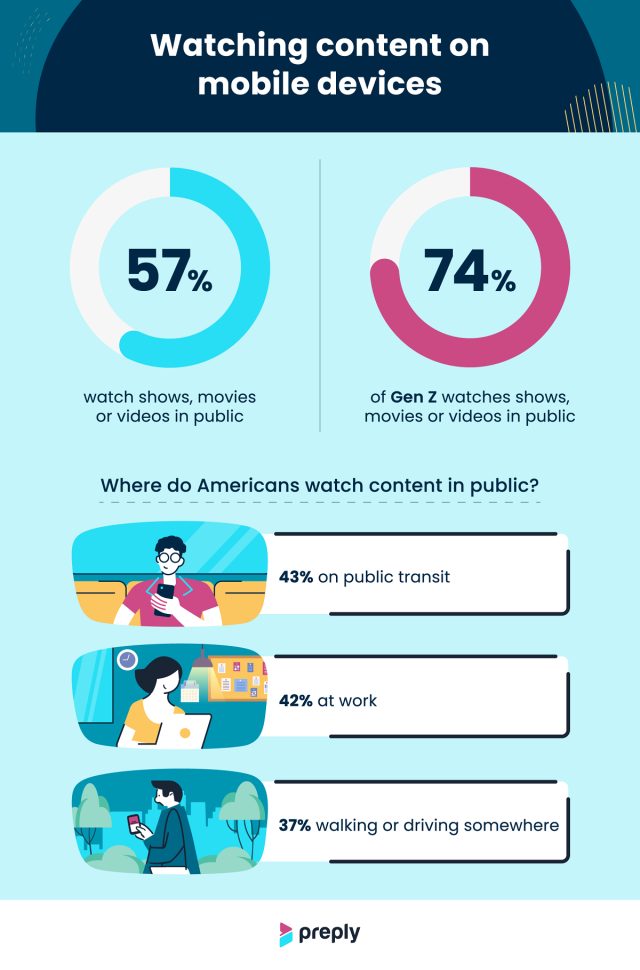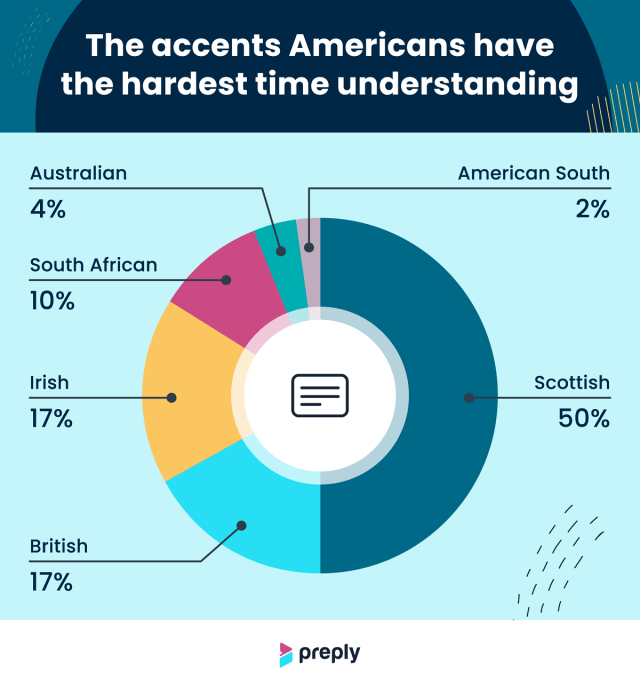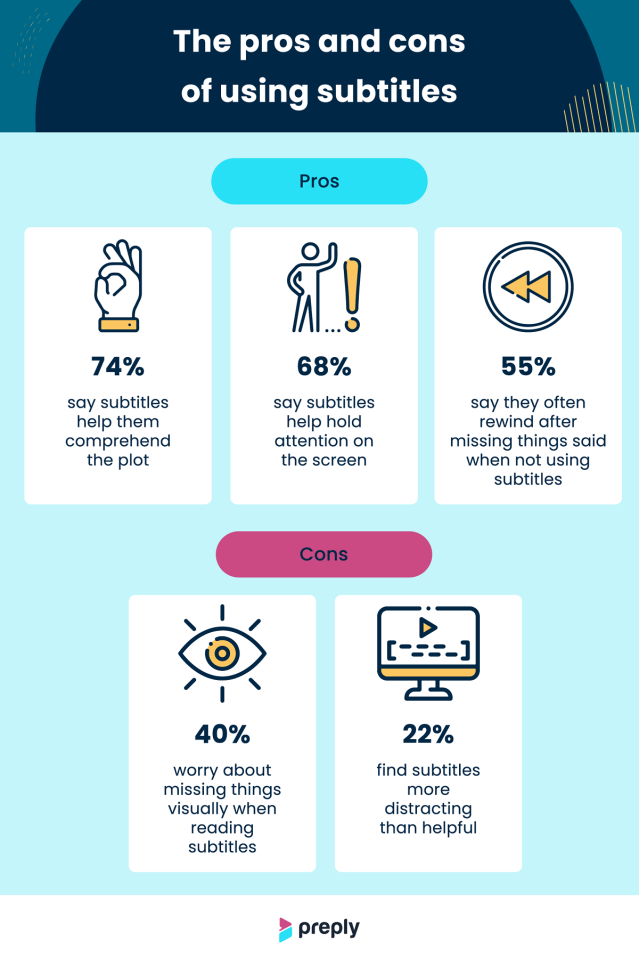TL;DR
- Captions and subtitles are an essential tool for individuals with hearing loss and, for a lot of people, they’re a constant on TV and video screens. A recent survey showed that 50% of Americans watch content with captions and subtitles most of the time.
- There are many reasons for this increase in caption viewing – advances in technology, societal expectations and changes in the way programs are broadcast which this article explains.
- If entertainment trends of dim lighting, loud background music, and muddled audio continue, it’s likely that the use of subtitles will only increase in popularity.
READ MORE: Survey: Why America is obsessed with subtitles (Preply)
No longer considered an optional feature, captions and subtitles have become an essential part of content creation. Recent data has shown that younger generations overwhelmingly prefer to watch content with subtitles on. So popular have captions and subtitles become that a third of Americans think subtitles should be the default on streaming services and cable TVs, while 26% think they should be the default at movie theaters.
READ MORE: Young viewers prefer TV subtitles, research suggests (BBC)
A survey of 1,260 Americans conducted by online language learning platform Preply found half of TV viewers watching content with subtitles most of the time, with younger (Gen Z) demos much more likely to be frequent users (70%). Millennials are also more likely to use the feature than the average respondent, at 53%. Older respondents, including Gen X and Baby Boomers, were actually the groups least likely to be frequent subtitles users.

One reason for the younger skew is that this is the generation that grew up with streaming sand social media and have become accustomed to watching TikTok, Instagram, or YouTube videos where subtitles and captions can be automatically generated.
Social media also influences how Gen Z consumes movies, TV shows, and other video. According to the survey, 74% of Gen Zs watch content in public on their mobile devices, meaning that captions and subtitles are a prerequisite if you want to follow your favorite show in a noisy environment.

Another reason cited for turning on the captions is that it’s become harder to hear the dialogue in shows and movies than it used to be. One reason for this, explains language services company Vitac, is that in movie productions, professional sound mixers calibrate audio for traditional theaters with large speaker systems to deliver a wide range of sound. But when that same content is streamed on a TV, smartphone, or tablet, the audio gets compressed to carry the sounds through much smaller speakers. Adding to this, the thinner design of today’s flat-screen TVs forces manufacturers to locate speakers in less-than-ideal positions (the sides, the back) that direct sound away from the viewer and can muffle character dialogue and on-screen actions.
READ MORE: The Growing Demand for Captions and Subtitles in Today’s Media Landscape (Vitac)
The issue could also be being exacerbated by the production itself. Sasha Urban at Variety notes a recent phenomenon of film and TV releases such as The Batman and Euphoria using visuals so dark that viewers can barely tell what’s happening. Whether this is due to changing director taste or the limits of home entertainment systems, Preply confirmed that a huge 78% of Americans in its poll have difficulty hearing dialogue due to loud background music in films and TV shows, leading 55% of respondents to agree that it is harder to hear on-screen dialogue than it used to be.
READ MORE: Don’t Adjust the Brightness: Here’s Why TV and Movies Are So Dark Now (Variety)
When it comes to productions being overall not as well lit, 44% of Americans agree that recent productions are using darker visuals than past ones. Not only that, but 35% agree that actors and TV personalities are talking faster than they used to.

Appetite for Global Programs
The rise in popularity (and easy availability) of foreign language content on streaming platforms is another reason for the increase in caption and subtitle usage.
A 2021 report showed that non-US shows accounted for nearly 30% of the demand for TV in the US, with top content coming from the UK, Japan, Korea, and India. The trend has continued with shows like Squid Game, or Money Heist gaining popularity in recent years.
READ MORE: Americans are consuming more foreign content than ever (Axios)

And even when a show is in English, that doesn’t always mean that it’s easy to understand or follow along with what people are saying. Shows from the UK contain regional accents, slang, and expressions that are unfamiliar to some viewers. Preply’s list of “The Hardest to Understand TV Shows” includes a number of UK-based shows, including Peaky Blinders, Derry Girls, Downtown Abbey, and Bridgerton among its rank.
Topping its list of hard to understand actors is Tom Hardy (Venom), Sofia Vergara (America’s Got Talent), Arnold Schwarzenegger, and Sean Connery, with Johnny Depp coming in fifth.
Pros and Cons
For viewers, using subtitles has clear pros and cons. Being able to follow along with the dialogue visually helps them understand the plot (74%), hold their attention on the screen (68%), and not rewind as frequently after missing things said (55%), which overall enhances the viewing experience.

However, subtitles also come with some cons. Splitting their attention from the visuals of the content makes 40% of viewers worried that they’re missing things. In fact, more than one in five Americans find subtitles more distracting than helpful.
And which streamer gets ranked best for its subtitling feature? Per Preply, Netflix is in the number one spot, with Amazon Prime coming in second and Hulu taking bronze.

